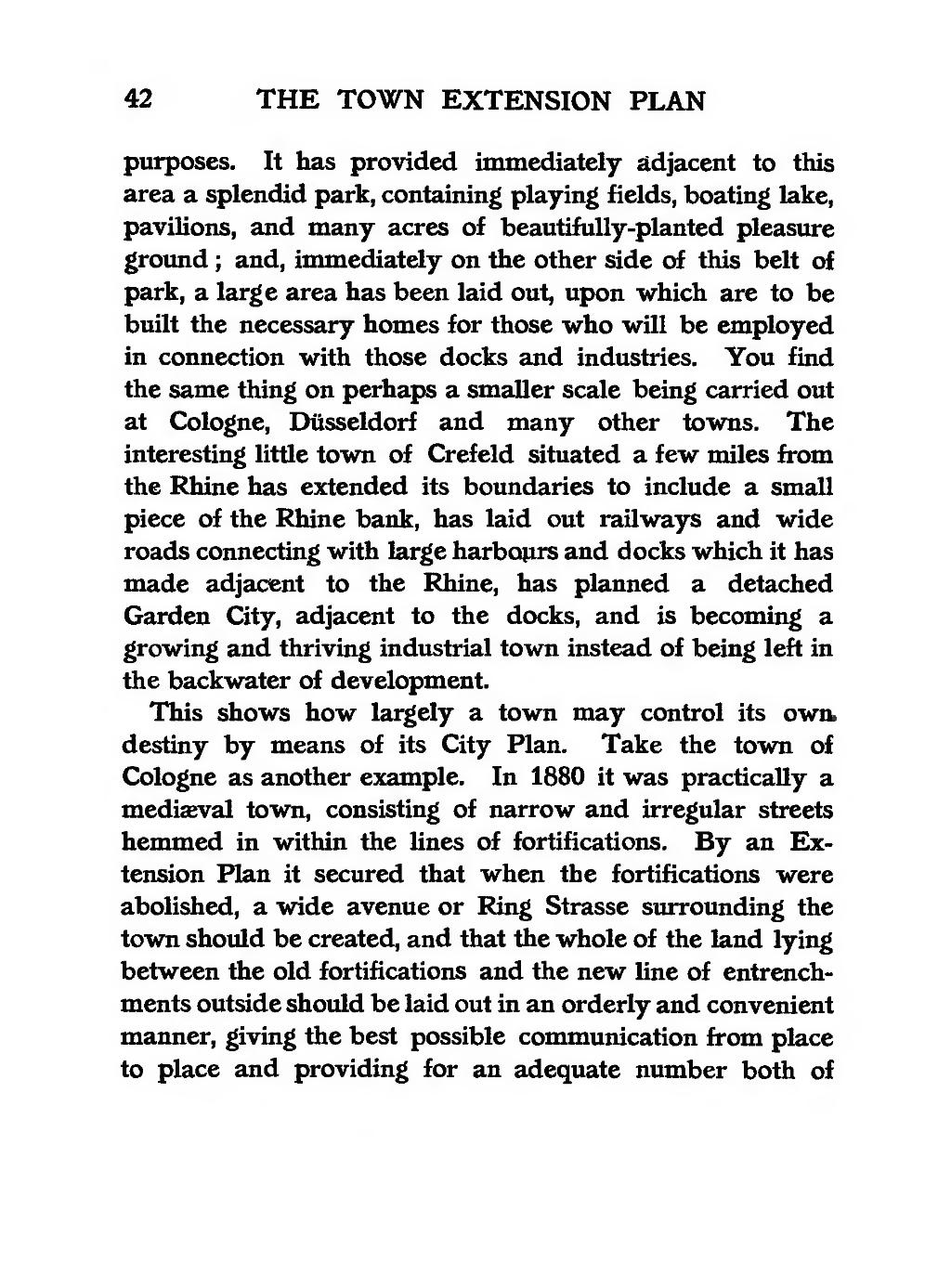purposes. It has provided immediately adjacent to this area a splendid park, containing playing fields, boating lake, pavilions, and many acres of beautifully-planted pleasure ground; and, immediately on the other side of this belt of park, a large area has been laid out, upon which are to be built the necessary homes for those who will be employed in connection with those docks and industries. You find the same thing on perhaps a smaller scale being carried out at Cologne, Düsseldorf and many other towns. The interesting little town of Crefeld situated a few miles from the Rhine has extended its boundaries to include a small piece of the Rhine bank, has laid out railways and wide roads connecting with large harbours and docks which it has made adjacent to the Rhine, has planned a detached Garden City, adjacent to the docks, and is becoming a growing and thriving industrial town instead of being left in the backwater of development.
This shows how largely a town may control its own destiny by means of its City Plan. Take the town of Cologne as another example. In 1880 it was practically a mediæval town, consisting of narrow and irregular streets hemmed in within the lines of fortifications. By an Extension Plan it secured that when the fortifications were abolished, a wide avenue or Ring Strasse surrounding the town should be created, and that the whole of the land lying between the old fortifications and the new line of entrenchments outside should be laid out in an orderly and convenient manner, giving the best possible communication from place to place and providing for an adequate number both of
